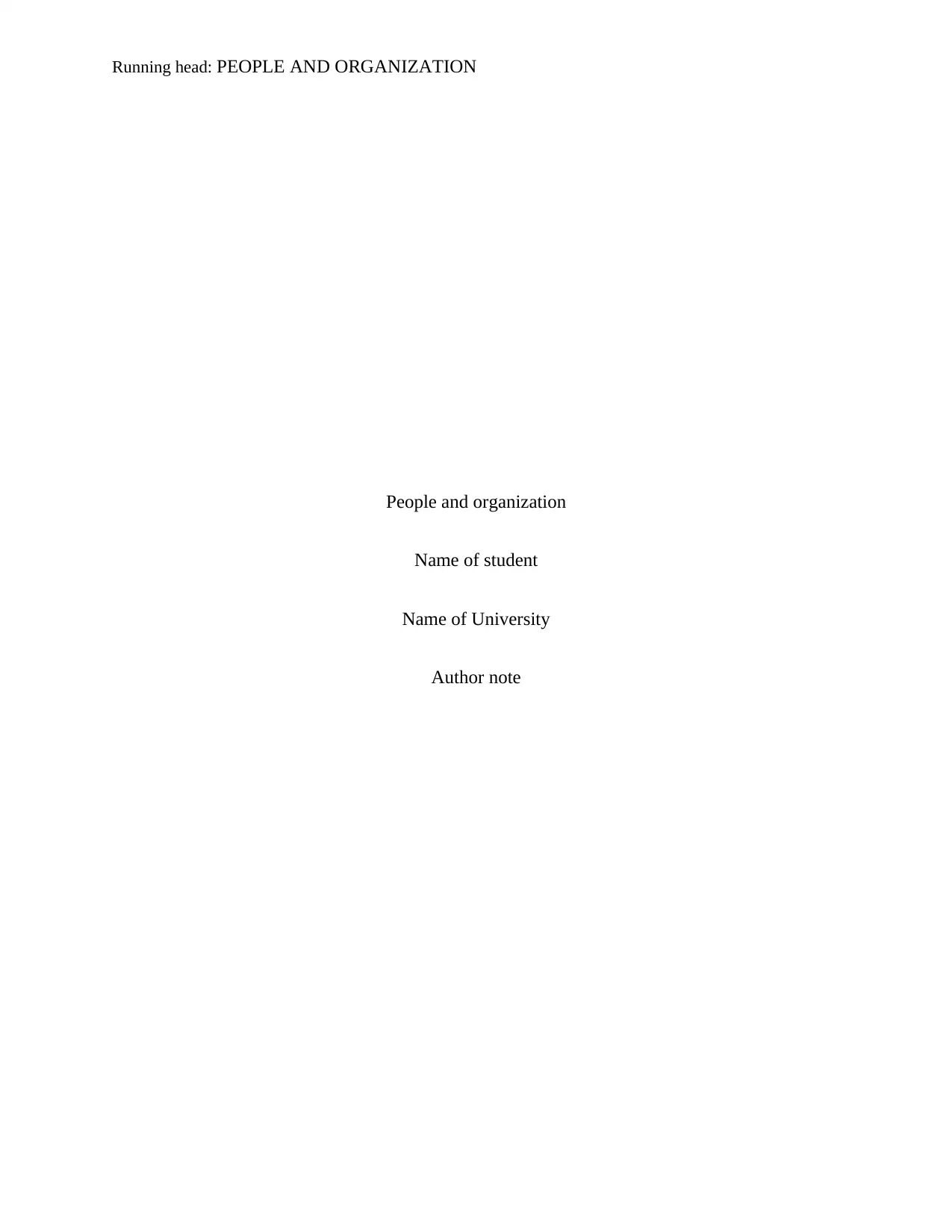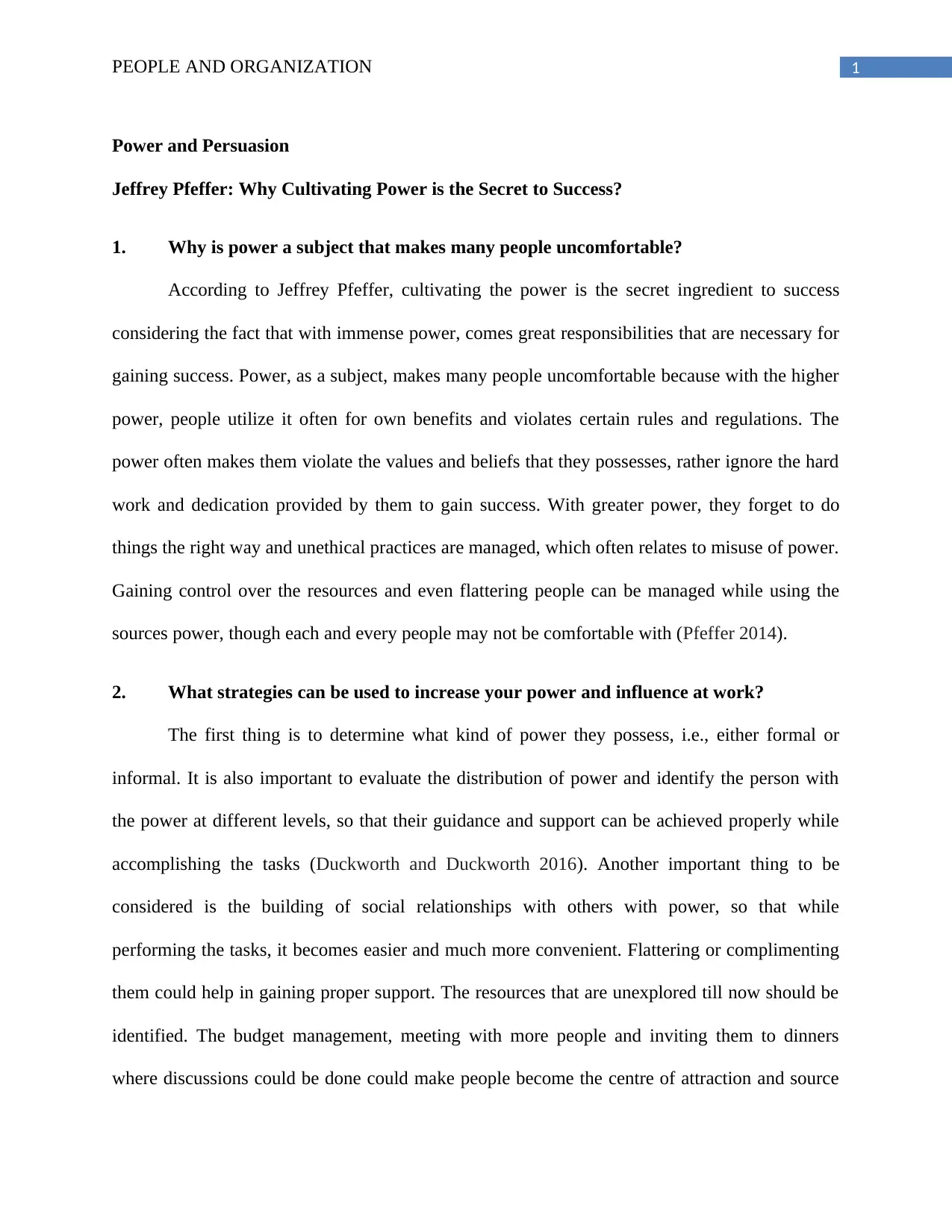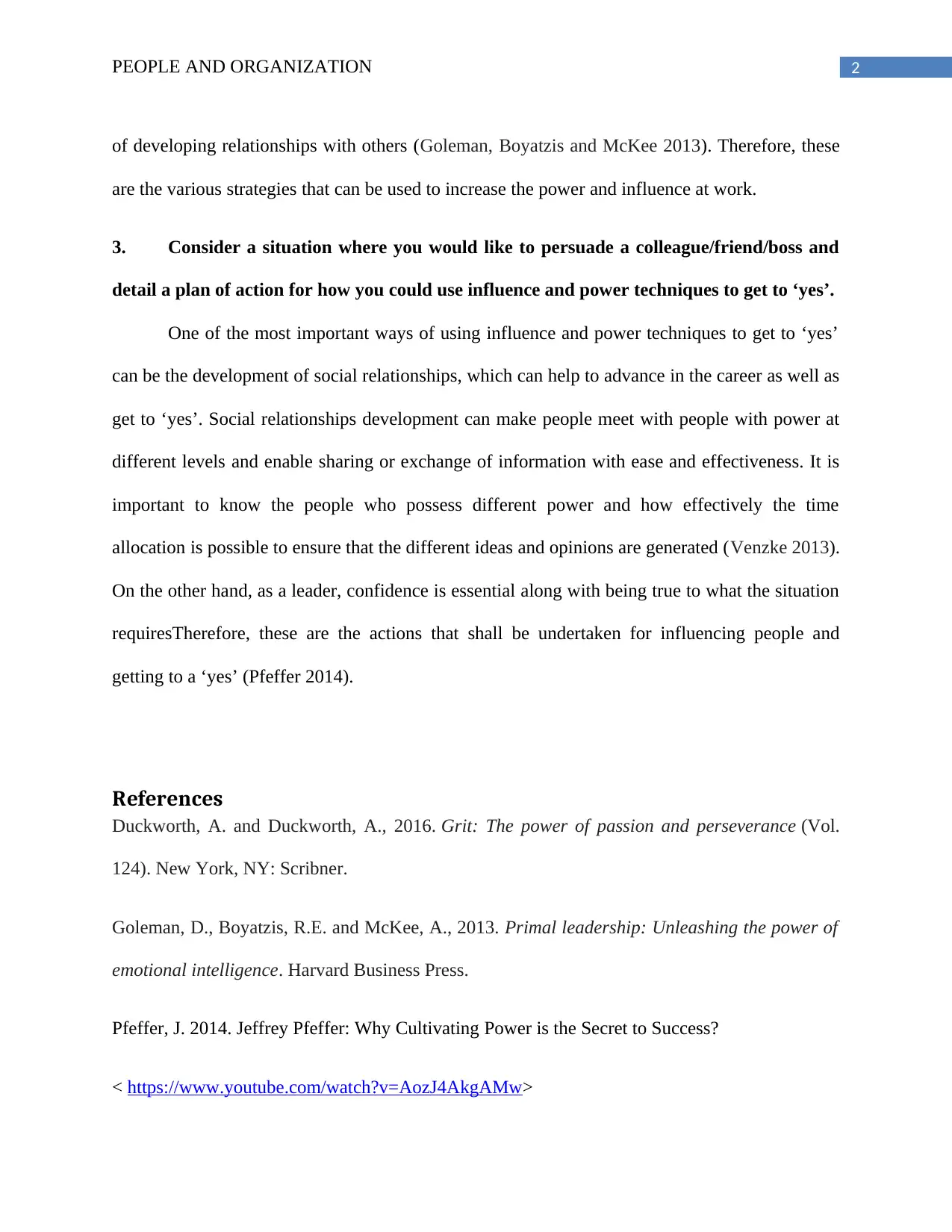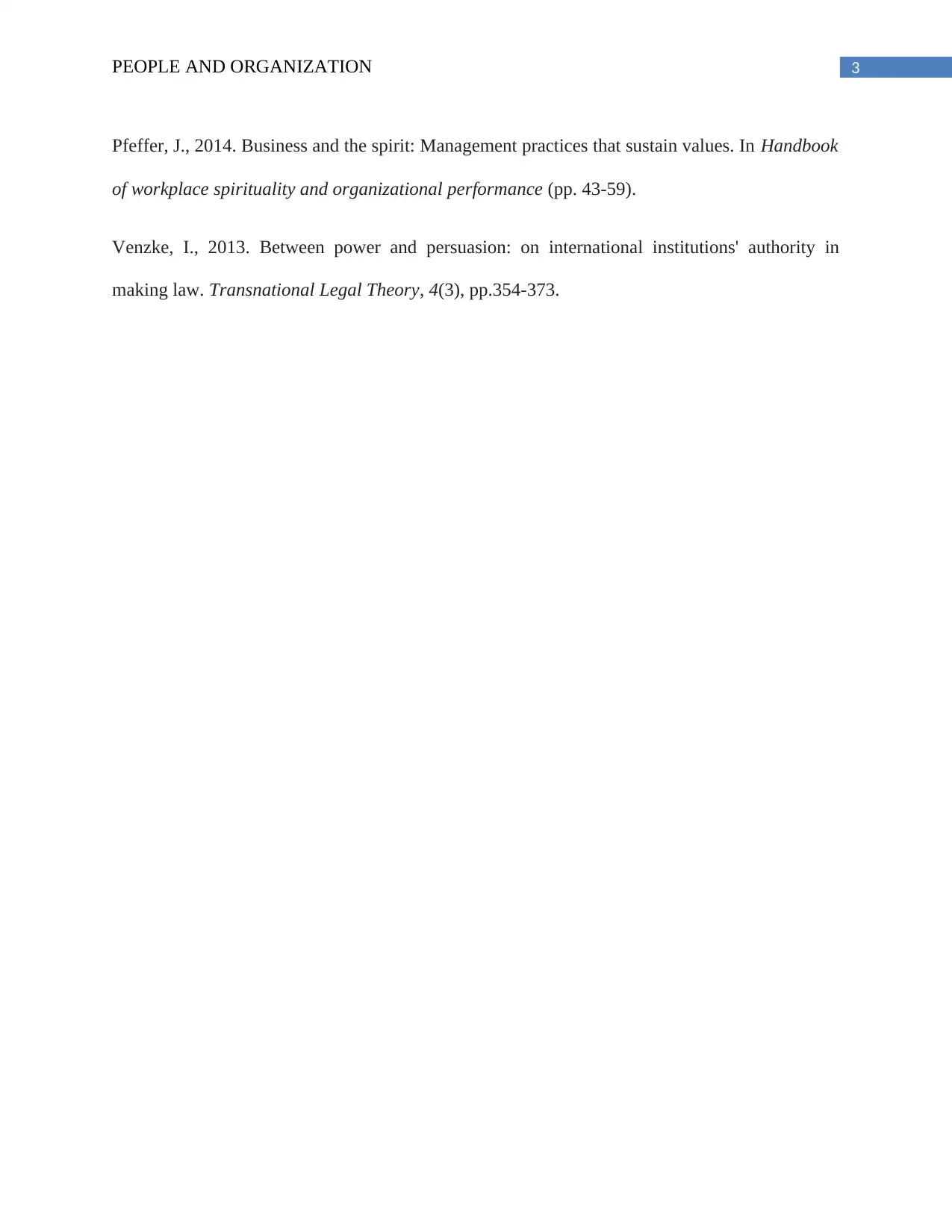Power and Persuasion: Netflix Culture, Influence and Power Techniques
VerifiedAdded on 2023/06/10
|4
|730
|250
Discussion Board Post
AI Summary
This assignment is a discussion post that delves into the concepts of power and persuasion within an organizational context, drawing insights from Jeffrey Pfeffer's work. It explores why power can be an uncomfortable subject and examines strategies to increase power and influence at work, such as building social relationships and identifying unexplored resources. The assignment then presents a scenario for persuading a colleague, detailing a plan of action that utilizes influence and power techniques to achieve a positive outcome. Furthermore, the discussion analyzes Netflix's organizational culture, as described by Reed Hastings, highlighting its culture of freedom and responsibility. The analysis focuses on how Netflix created and sustains its strong culture, including its unique approach to vacation policies and expense management, which fosters employee autonomy and accountability. The assignment references key academic sources to support its arguments, offering a comprehensive examination of power dynamics and organizational culture.
1 out of 4










![[object Object]](/_next/static/media/star-bottom.7253800d.svg)